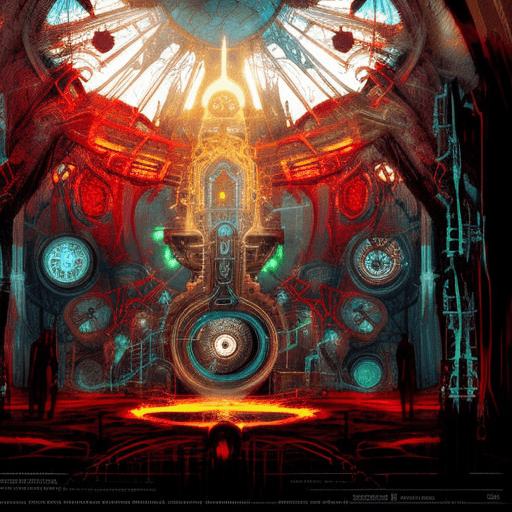The Time Machine: Summary
In H.G. Wells’ classic science fiction novel, “The Time Machine,” an inventor creates a machine that allows him to travel through time, witnessing the future of humanity. As he ventures into the distant future, he encounters two distinct species, the Eloi and the Morlocks, and uncovers a grim truth about the fate of humanity.
The story begins with an unnamed narrator discussing a dinner party he attended, where he met the Time Traveller, a brilliant inventor. The Time Traveller reveals his latest creation, a time machine, and shares his plans to travel through time. Skeptical but intrigued, the narrator returns a week later to find the Time Traveller in a disheveled state, claiming to have traveled to the year 802,701.
The Eloi and the Morlocks
In the year 802,701, the Time Traveller encounters the Eloi, a seemingly peaceful and childlike species that lives in a utopian society. However, he soon realizes that the Eloi lack curiosity, intelligence, and any desire for progress. They live in fear of the dark and are completely dependent on the environment around them.
As the Time Traveller explores further, he discovers another species, the Morlocks, who live underground and only come out at night. The Morlocks are physically strong but lack the refinement and innocence of the Eloi. They prey on the Eloi, using them as a source of food and labor.
The Time Traveller deduces that the Eloi and the Morlocks are the descendants of the human race, with the Eloi representing the upper class and the Morlocks the working class. Over time, the division between the two groups has become more pronounced, leading to the Eloi’s intellectual and physical decline and the Morlocks’ predatory nature.
The Future of Humanity
As the Time Traveller delves deeper into the future, he witnesses the gradual decay of human civilization. He sees crumbling buildings, deserted cities, and a world devoid of any signs of advanced technology. The human race has become fragmented, with the Eloi and the Morlocks representing the remnants of a once-great civilization.
The Time Traveller theorizes that the division between the Eloi and the Morlocks is a result of social and economic inequality. The upper class became complacent and detached from reality, while the working class was forced to adapt to survive. This stark contrast ultimately led to the downfall of humanity.
In a desperate attempt to return to his own time, the Time Traveller retrieves his time machine and narrowly escapes the clutches of the Morlocks. He returns to the present day, but his experiences in the future have left him deeply disturbed. He shares his story with the narrator and vows to continue his exploration of time.
Key Takeaways
- The Time Machine explores themes of social inequality, the consequences of complacency, and the potential future of humanity.
- The division between the Eloi and the Morlocks serves as a cautionary tale about the dangers of societal stratification.
- The novel raises questions about the nature of progress, the importance of curiosity, and the impact of class divisions on society.
“It sounds plausible enough tonight, but wait until tomorrow. Wait for the common sense of the morning.”
In “The Time Machine,” H.G. Wells paints a vivid picture of a future where humanity has become divided and stagnant. Through the contrasting societies of the Eloi and the Morlocks, Wells explores the dangers of social inequality and the consequences of complacency. The novel serves as a reminder of the importance of progress, curiosity, and the need to address societal divisions to ensure a brighter future for humanity.












